Study the below given periodic table in which four elements are indicated by alphabets: A, B, C and D.
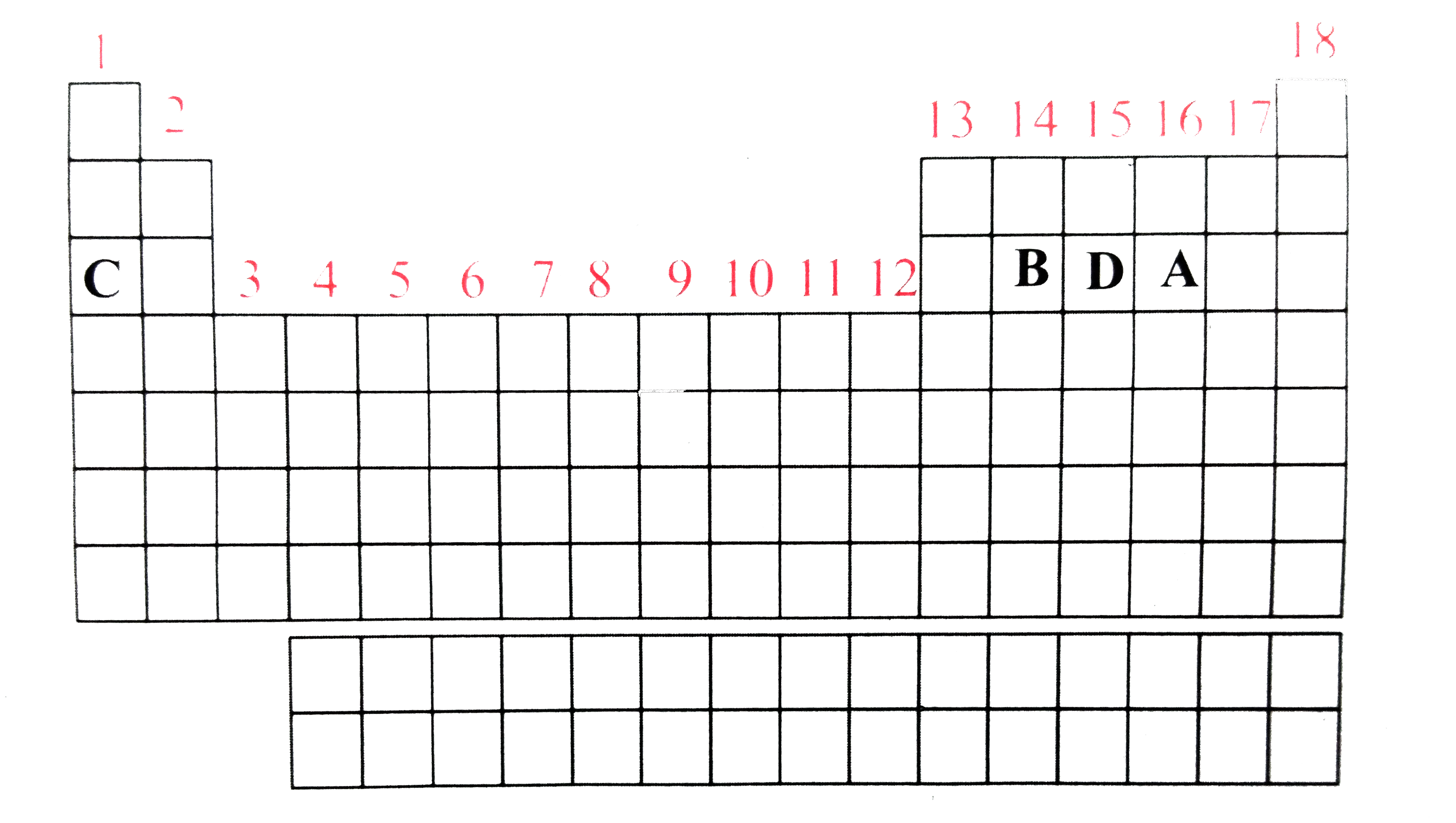
Among 'C' and 'D' which element has larger atomic radius?
Element 'C' has larger atomic radius than element 'D'.
Topper's Solved these Questions
- BOOK - TARGET PUBLICATIONCHAPTER - PERIODIC CLASSIFICATION OF ELEMENTS EXERCISE - Questions based on paragraph15videos
PERIODIC CLASSIFICATION OF ELEMENTS
- BOOK - TARGET PUBLICATIONCHAPTER - PERIODIC CLASSIFICATION OF ELEMENTS EXERCISE - Apply your knowledge49videos
PERIODIC CLASSIFICATION OF ELEMENTS
- BOOK - TARGET PUBLICATIONCHAPTER - PERIODIC CLASSIFICATION OF ELEMENTS EXERCISE - Complete the given chart/table2videos
PERIODIC CLASSIFICATION OF ELEMENTS
- BOOK - TARGET PUBLICATIONCHAPTER - METALLURGYEXERCISE - CHAPTER ASSESSMENT19videos
METALLURGY
Similar Questions
Study the below given periodic table in which four elements are indicated by alphabets: A, B, C and D.
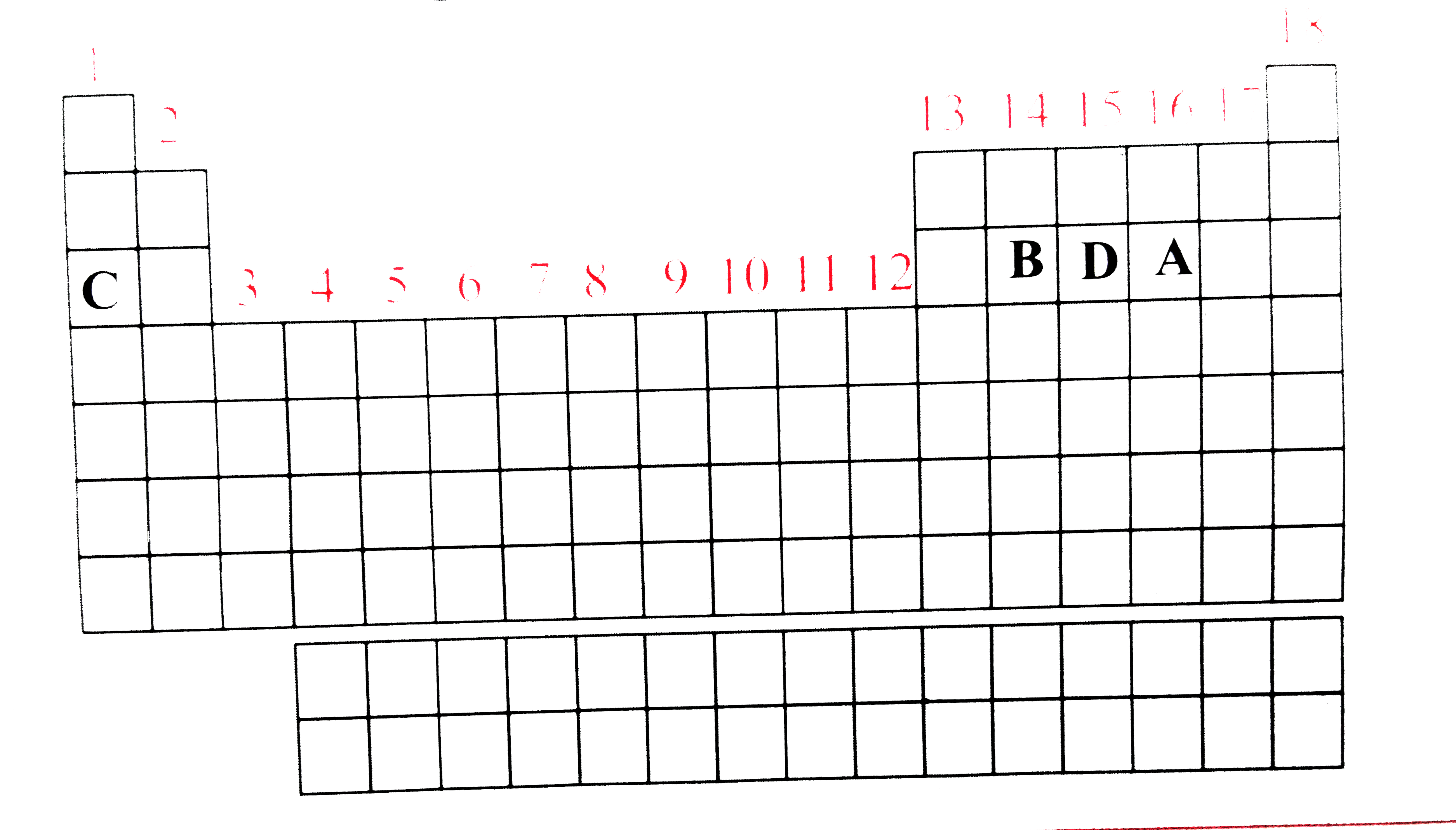
Which element is a metalloid? Name this element.View SolutionStudy the below given periodic table in which four elements are indicated by alphabets: A, B, C and D.
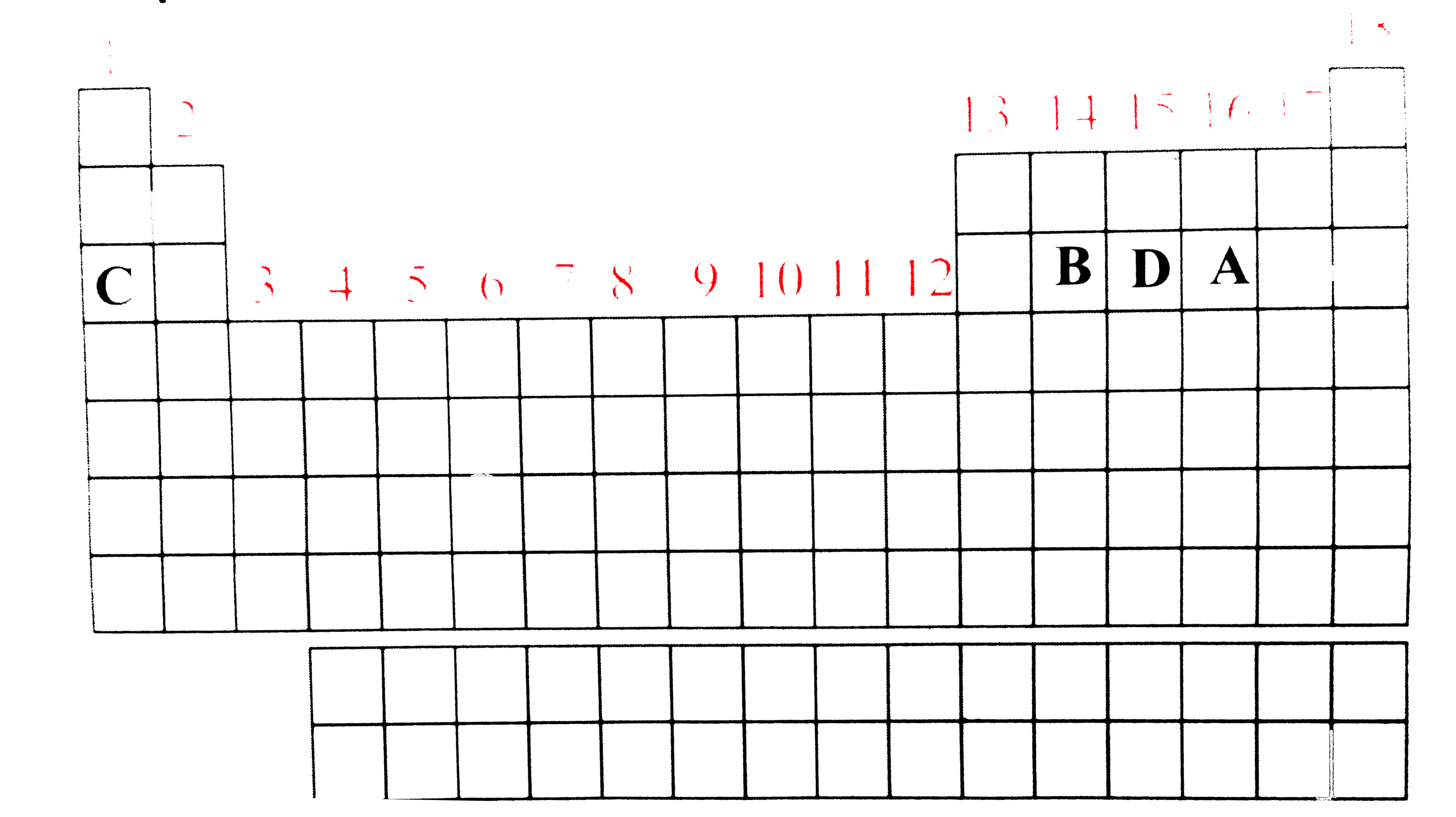
Identify element 'A' and write its electronic configuration.View Solution
Knowledge Check
- Question 1 - Select One
In modern periodic table, by which name d-block elements are known ?
AMore electropositive elemen isBLess electropositive elementsCTransition elementsDInner transition elements
Among the elements B, Al , C and Si
which has the largest atomic radius?View SolutionThe following table shows the position of five elements A, B, C, D and E in the modern periodic table.
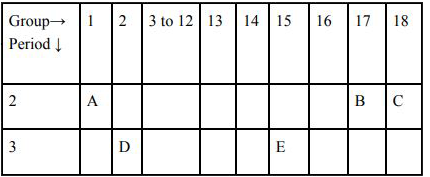
Answer the following giving reasons:
(i) Which element is a metal with valency two?
(ii) Which element is least reactive?
(iii) Out of D and E which element has a smaller atomic radius?View SolutionThe electronic configurations of the elements A, B, C and D are given below. Which element has the highest metallic character?
View SolutionThe atomic radii of the elements of second period are given below:

(a) Arrange these elements in the decreasing order of their atomic radii (Keeping the element with the largest atomic radius first).
(b) Are the elements now arranged in the pattern of a period in the periodic table?
(c) Which elements have the largest and the smallest atoms?
(d) From this data, infer how the atomic size (or atomic radius) of the elements changes as you go from left to right in a period?View SolutionStudy the table below which shows different colour produced by universal indicator in A, B, C and D
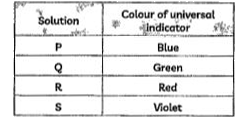
Which of them is strongly basic?View SolutionRohan was told that six elements A,B, C,D,E and F have atomic numbers of 2,12,20,18,4 and 10 respectively (where A,B,C,D,E and F are not the chemical symbols of these elements). Based on this information, Rohan was asked to answer the following questions:
(a) Which of these elements belong to the same groups of the periodic table? Why?
(b) Which of these element belong tothe same periods of the periodic table? Why?
(c) Which of these elements are (i) metals, and (ii) non-metals?
(d) Which of these elements are chemically (i) reactive and (ii) unreactive?
(e) What values are displayed by Rohan in answering the above questions?View SolutionThe electronic configuration of four elements A, B, C and D are:
View Solution

